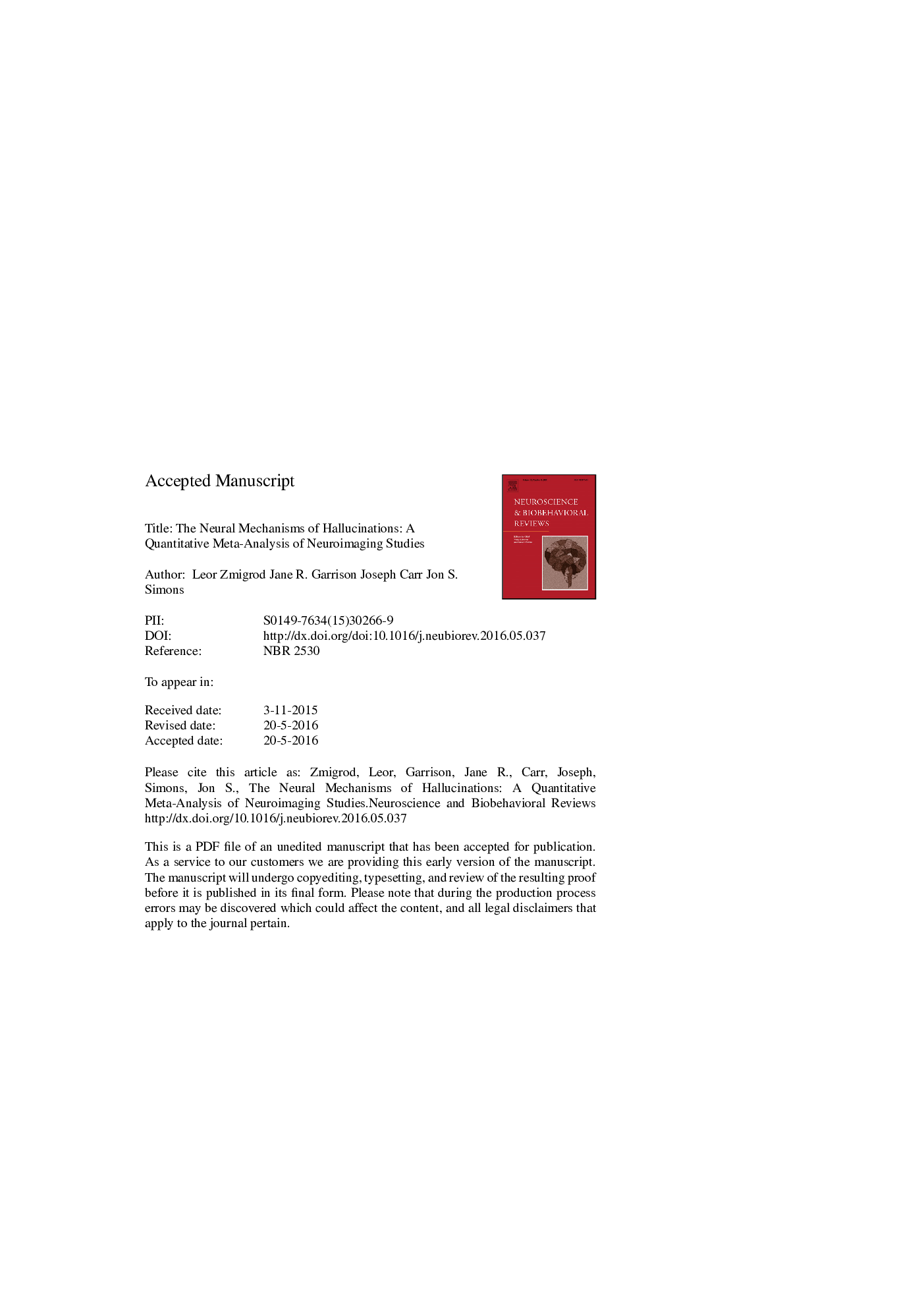| Article ID | Journal | Published Year | Pages | File Type |
|---|---|---|---|---|
| 7302736 | Neuroscience & Biobehavioral Reviews | 2016 | 40 Pages |
Abstract
Activation likelihood estimation meta-analysis of functional neuroimaging data was used to investigate the neural mechanisms underlying auditory-verbal and visual hallucinations (AVHs and VHs). Consistent activation across studies during AVHs, but not VHs, in Wernicke's and Broca's areas is consistent with involvement of speech and language processes in the experience of hearing voices when none are present. Similarly, greater activity in auditory cortex during AVHs and in visual cortex during VHs supports models proposing over-stimulation of sensory cortices in the generation of these perceptual anomalies. Activation across studies in the medial temporal lobe highlights a role for memory intrusions in the provision of content for AVHs, whereas insula activation may relate to the involvement of awareness and self-representation. Finally, activation in the paracingulate region of medial prefrontal cortex during AVHs is consistent with models implicating reality monitoring impairment in the misattribution of self-generated information as externally perceived. In the light of the results, the need for unified theoretical frameworks that account for the full range of hallucinatory experiences is discussed.
Related Topics
Life Sciences
Neuroscience
Behavioral Neuroscience
Authors
Leor Zmigrod, Jane R. Garrison, Joseph Carr, Jon S. Simons,
